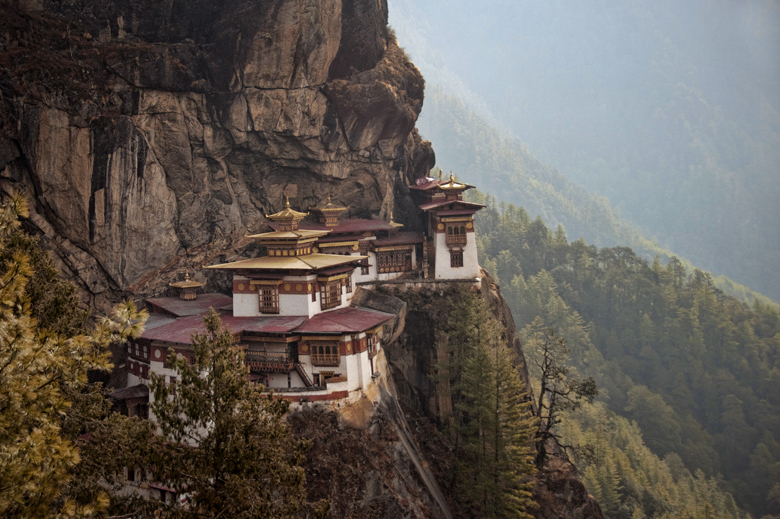
Nine out of ten Bhutanese are farmers, eking out a simple subsistence from small plots of marginally arable land. Skill level is low, the result of enforced isolation for centuries. This is a nation betwixt and between the medieval and modern world. Life expectancy and literacy are low and infant mortality high despite recent progress in education and health care. Most of Bhutan remains an unspoiled land of farmers and yak herders, living as their forefathers did long ago in the cool, green heights.
Because of this isolation and reverence for the past, Bhutan has been slow to develop its natural resources. Consequently forests are virgin and rivers mostly free-flowing. More than half of the land surface has been set aside as forest preserves, lush oak and evergreen spangled with rhododendrons, where endangered species such as tiger, snow leopard, and wild oxen hang out. There are, in addition, 500 or so species of birds. As Bhutan gradually opens its doors to the 21st century, a stated objective of the king is to do so with minimal impact on the environment.
My guide and I passed in and out of shadow, up slippery trails and worn steps, and into the warmth of late morning. We were ascending 3,000 feet to Tiger's Nest Monastery, national symbol of Bhutan. From the valley floor the monastery appeared to have been chiseled out of the granite face, teetering on the brink. As I gained the heights the land below appeared like a green shag carpet of forests broken by fields and farmhouses. At the top it was as if I had been inserted into a world where time stood still. And perhaps it did.
© Danny Kimberlin 2015